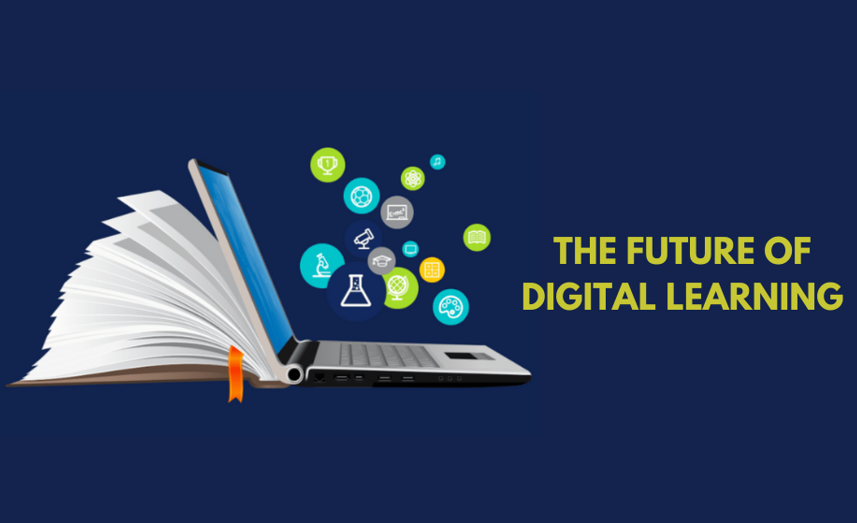Education has always evolved to keep pace with societal and technological advancements. From chalkboards to smartboards, handwritten notes to cloud-based assignments, learning methods are constantly changing. The introduction of the Digital SAT is another example of how technology is reshaping education. But this evolution is about more than just moving from paper to screen—it’s about reimagining how students learn, adapt, and succeed in an increasingly digital world.
In this blog, we’ll explore how preparing for the Digital SAT can serve as a stepping stone for embracing modern learning approaches that benefit students far beyond standardized tests.
The Shift to Digital Learning: Adapting to Change
The move to the Digital SAT is more than a logistical update—it’s a response to the digital revolution that has transformed how information is accessed, shared, and absorbed.
Why the Digital SAT Matters
- Technological Familiarity: Today’s students are digital natives, comfortable navigating online platforms. The Digital SAT leverages these skills by introducing a test environment that aligns with their daily experiences.
- Adaptive Questioning: The Digital SAT uses adaptive algorithms that adjust question difficulty based on a student’s performance. This personalized approach mirrors how digital learning platforms cater to individual learning styles.
- Environmental Impact: Reducing paper usage contributes to more sustainable testing practices, aligning education with environmental awareness trends.
By embracing digital education tools and test formats, students prepare themselves for a world where adaptability and tech proficiency are essential skills.
Learning Beyond Memorization: Developing Real-World Skills
Traditional test preparation often focused on rote memorization and formulaic answers. The Digital SAT, much like the modern education landscape, demands a more dynamic approach.
Critical Thinking and Problem Solving
Digital test environments often present questions that require students to think critically rather than rely solely on memorized information. This shift encourages students to develop skills that are invaluable in college and the workplace.
Time Management and Decision-Making
With timed digital tests, students must learn how to pace themselves, prioritize questions, and make quick decisions. These are essential skills for navigating both academic and professional challenges.
Self-Directed Learning
Preparing for the Digital SAT often involves independent study using online resources and practice tools. This fosters self-discipline and the ability to manage one’s learning path.
The Role of Technology in Learning
As the Digital SAT exemplifies, technology is at the heart of modern education. But its role extends far beyond test-taking.
Interactive Learning Tools
Digital platforms offer interactive lessons, quizzes, and multimedia content that make learning more engaging. Instead of passively reading a textbook, students can actively engage with content through gamified exercises and simulations.
Personalized Learning Paths
AI-driven educational platforms analyze a student’s strengths and weaknesses, creating a customized learning experience that adapts over time. This mirrors the adaptive nature of the Digital SAT itself.
Global Connectivity
Digital learning removes geographical barriers, allowing students to connect with tutors, peers, and educational content from around the world. This exposure to diverse perspectives enriches the learning experience.
Reimagining Study Strategies for the Digital SAT
Preparing for the Digital SAT requires more than just traditional study techniques. Here are some strategies to help students thrive:
1. Embrace Digital Practice Tests
Full-length digital practice tests help students get comfortable with the test interface and build stamina for the real exam.
2. Use Data-Driven Insights
Track performance analytics to identify weak areas and adjust study plans accordingly.
3. Balance Screen Time with Offline Learning
While digital tools are essential, balancing them with offline study methods can reduce screen fatigue and improve comprehension.
4. Develop Test-Taking Strategies
Practice flagging questions for review, managing the on-screen timer, and navigating between sections efficiently.
Life Skills Gained from Digital Test Preparation
Preparing for the Digital SAT doesn’t just help students get into college—it equips them with skills for life.
Tech Literacy
Navigating digital platforms and using data-driven insights are critical skills in a tech-driven world.
Adaptability
The fast-paced nature of digital tests requires students to adapt quickly—a skill that is invaluable in a constantly changing world.
Resilience and Problem-Solving
Facing challenges during practice sessions builds resilience and problem-solving skills that extend beyond academics.
The Future of Education: Blending Tradition with Innovation
As technology continues to reshape education, a balanced approach that blends traditional teaching methods with digital innovations will likely become the norm.
Teacher-Tutor Integration with Tech
Human educators will play a vital role in guiding students through personalized learning paths created by digital platforms.
Lifelong Learning Mindset
The skills students develop while preparing for the Digital SAT—self-directed learning, adaptability, and tech literacy—will serve them throughout their lives.
Final Thoughts: The Digital SAT as a Catalyst for Growth
The Digital SAT is more than just a new test format; it represents a shift in how we approach education and learning. By embracing the digital landscape and adopting modern study strategies, students can prepare not only for test day but also for a future defined by technological advancement and continuous learning.
Success in the Digital SAT is about more than knowing the right answers—it’s about learning how to learn, adapt, and thrive in a digital-first world.
Would you like suggestions for integrating more real-life examples or additional focus on specific digital learning tools?
